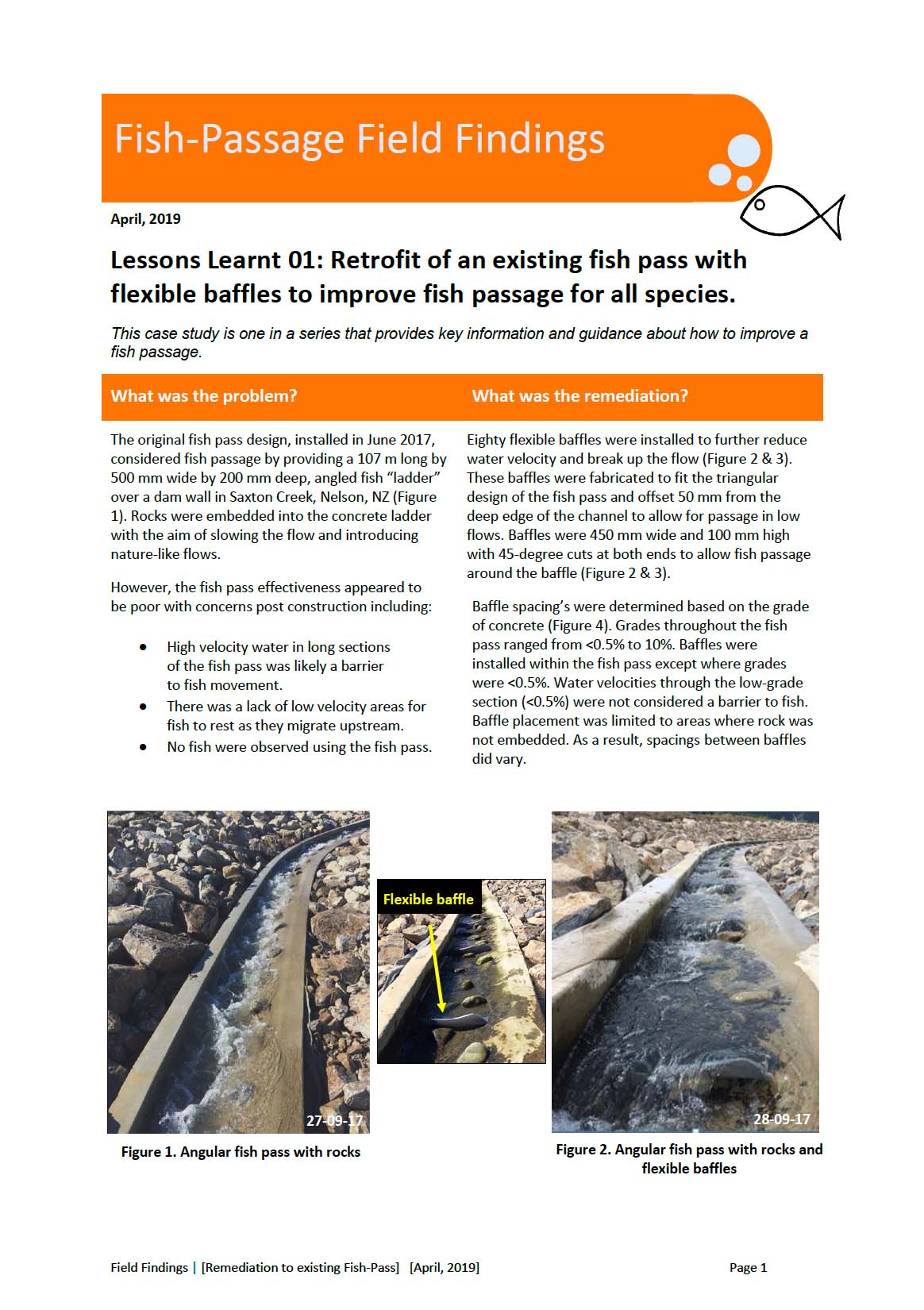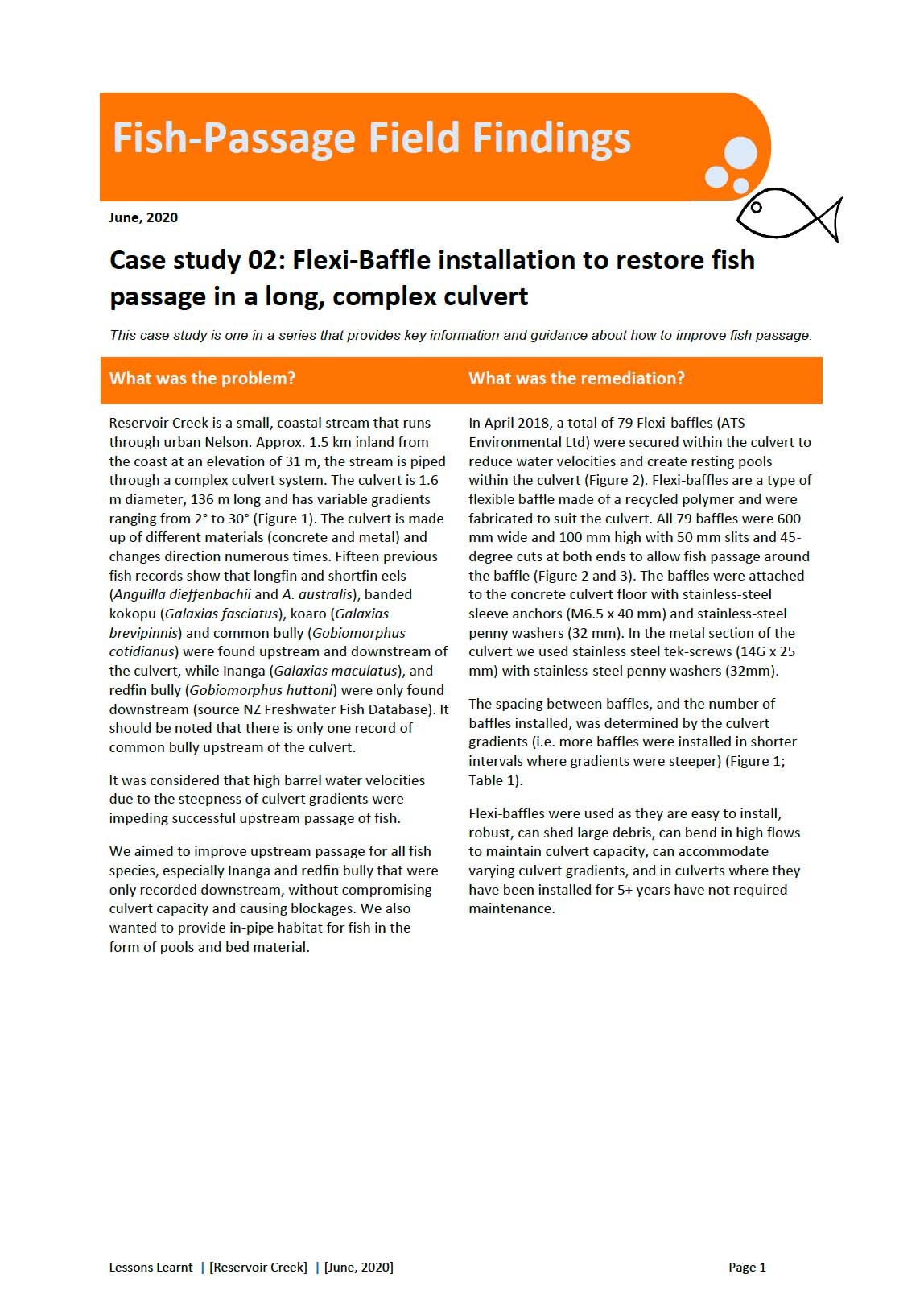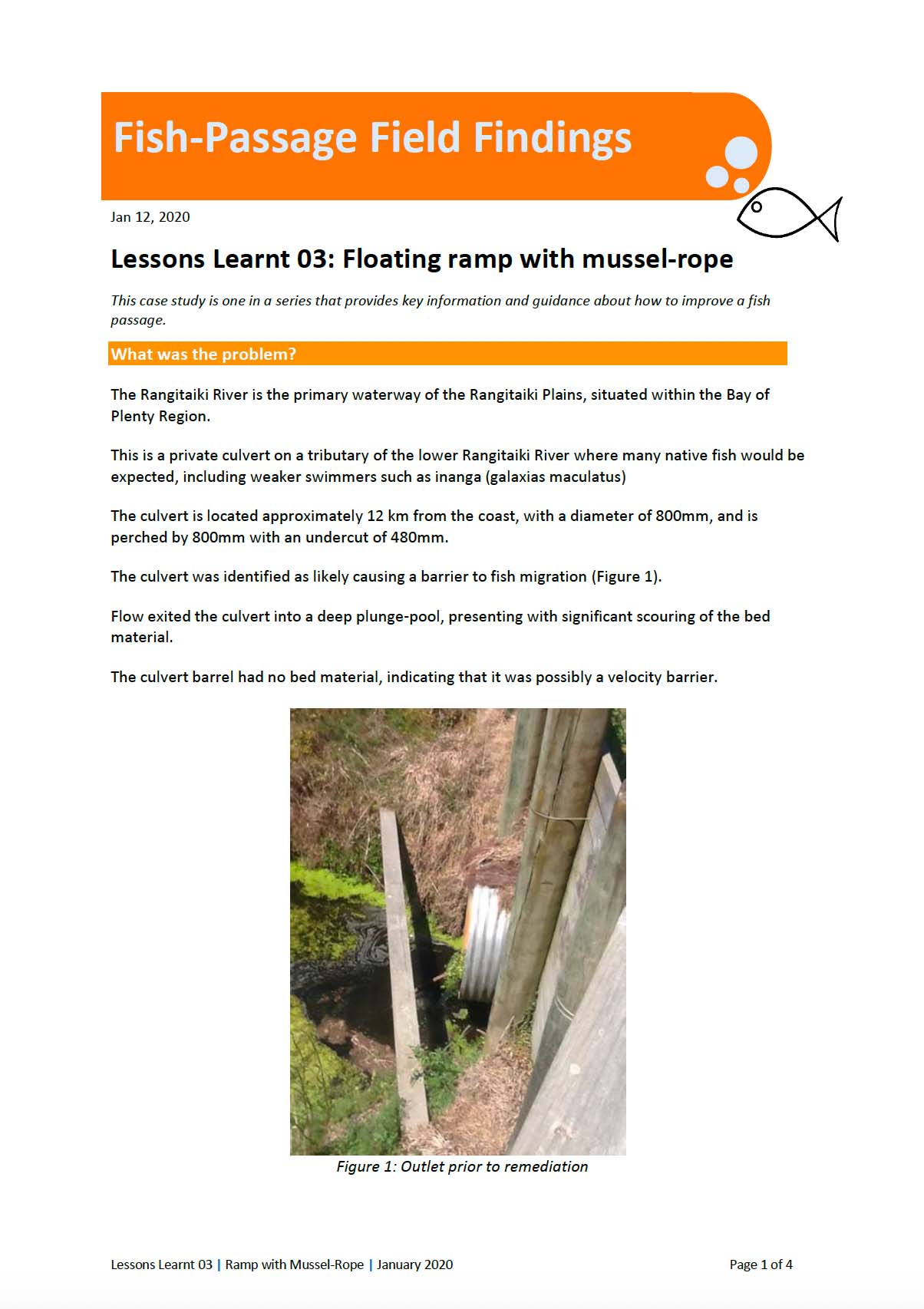Field Findings
Over the last several years we have tackled numerous remediation projects and have learnt many lessons along the way.
1. Retrofitted Baffles – Saxton Creek Fish Pass
An existing fish pass in Saxton Creek was retrofitted with 80 flexible baffles after it was found ineffective in aiding fish migration due to high velocities and a lack of resting areas. The baffles, cut to fit the triangular profile of the concrete fish ladder, provided low-velocity zones critical for weaker swimmers. Within a day of installation, inanga were observed using the pass, and further surveys confirmed multiple species, including eels and banded kokopu, successfully navigating the structure. The retrofit not only enhanced habitat connectivity but also underscored the importance of flow complexity and ongoing maintenance in fish pass design.
2. Flexi-Baffle Installation – Reservoir Creek
Reservoir Creek in Nelson faced significant fish migration challenges due to a long, steep, and complex culvert. To address this, 79 custom-fitted Flexi-baffles were installed in 2018 to reduce water velocity and form resting pools. These flexible baffles varied in spacing based on culvert gradient and were securely anchored to suit the culvert’s concrete and metal sections. Monitoring showed the first recorded upstream presence of previously downstream-only species like inanga and redfin bully, and a general increase in fish diversity and abundance upstream. The baffles have remained maintenance-free, proving to be a robust and effective solution for long-term fish passage restoration.
3. Floating Ramp with Mussel-Rope – Rangitaiki River Tributary
To improve fish passage in a perched and undercut culvert on a tributary of the Rangitaiki River, a 2.4-meter floating ramp fitted with mussel-rope strands was installed. The system, designed to support weak swimmers like inanga, included eight strands of mussel-rope laid on a smooth-surfaced ramp and flexible baffles within the culvert to create rest zones and reduce water velocity. Post-installation surveys revealed a dramatic improvement in upstream fish movement—from zero fish detected upstream to 125 fish across multiple species, demonstrating the ramp’s effectiveness. The rope also promoted aquatic vegetation growth and did not require maintenance, offering a low-impact, successful remediation strategy.



